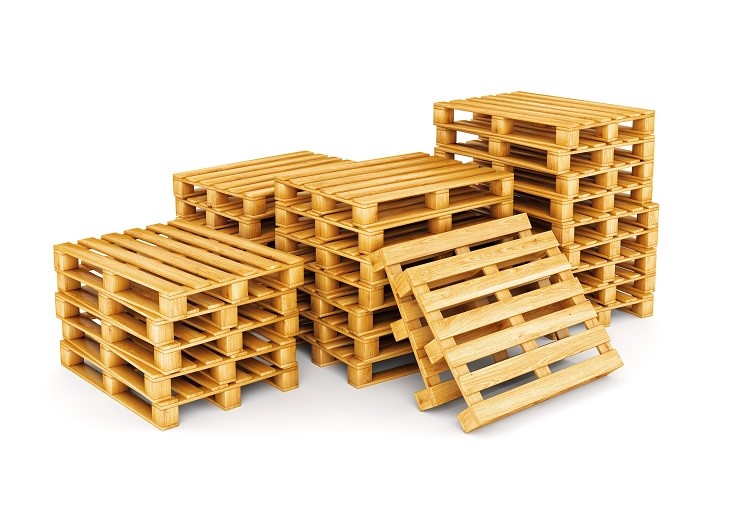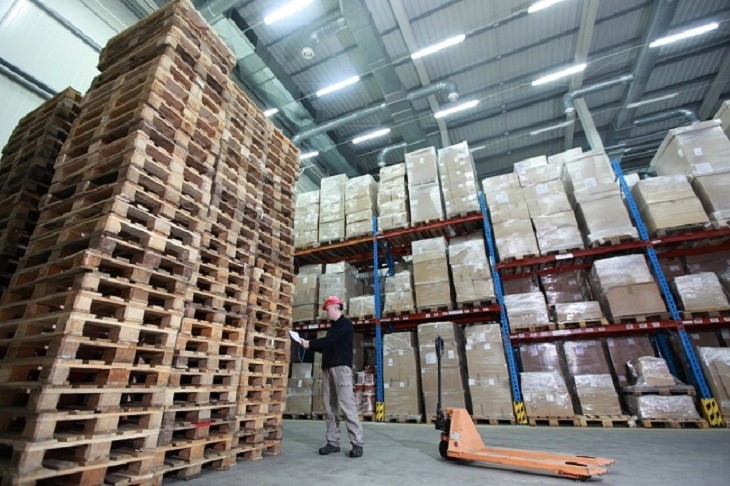Introduction to Pallet Manufacturing
Pallet manufacturing is a world rarely explored, and yet it plays a significant role in many aspects of our lives – from home improvement and architecture to logistics and warehousing. This marketplace of wooden structures, constructed exquisitely for strength and durability, often remains an unsung hero in the industrial and DIY world. It seems that the humble pallet only comes to mind when we’re talking about shipping goods or creating quirky furniture pieces. For the unacquainted, pallets may appear as mere wooden frameworks, but the truth is that there’s a lot more science, thought, and yes — artistry involved than you’d imagine.

Understanding pallet manufacturing means recognizing the work put into these simple yet effective structures. Like a perfectly composed symphony, each part of the pallet plays a vital role in composing the essential, sturdy structure needed for carrying heavy loads. So let’s open the curtain to the exciting world of pallets — after all, appreciating the process can definitely broaden our perspective on design, architecture, and sustainability.
Anatomy of a Pallet
A pallet can be broken down into four basic components: deck boards, stringers, blocks, and bottom boards. Deck boards are the top surface of the pallet where goods are placed. These are usually the widest component and provide an easy platform for loading and unloading goods.
Stringers and blocks, on the other hand, are essential for providing support to deck boards. Stringers are horizontal boards that are placed between the top and bottom deck boards, usually in threes or fours, while blocks are more solid pieces of wood used instead of stringers in block pallets, giving more support and allowing four-way entry access for forklifts.
Lastly, bottom boards, another set of panels, provide the base. The importance of each of these components cannot be understated — they all synergize to form a structure that can support and distribute tremendous weight evenly over its surface.
The Various Materials of Pallet Production
The material selection in pallet manufacturing takes into account durability, ease of construction, cost-effectiveness, and the specific requirements of the end-user. Hardwood and softwood are the most common choices for pallet production.
Hardwood pallets, made from broad-leaf deciduous trees like oak, are known for their longevity and ability to withstand heavy loads. These are ideal for multiple uses and a reliable choice for any warehouse or freight operation.
Softwood, on the other hand, is more commonly used for lightweight, single-use pallets. Due to the nature of the coniferous trees from which it comes, it is a cost-effective and easily disposable option.
In recent years, plastic has also become a popular choice. Easy to clean, sturdier than wood in some respects, and unaffected by several environmental factors, plastic pallets have carved out a niche for themselves in specific industries like the food and pharmaceutical sector.
The Step-by-Step Approach to Pallet Manufacturing
The process of crafting a pallet starts with the selection of the raw material. Based on the predetermined design, appropriate wood logs or recycled wood are selected. The wood is then processed through a series of sawing and de-barking processes.
Next, the wood is cut into the specific dimensions required for the stringers, deck boards, and bottom boards. The wood pieces are then carefully assembled, with stringers placed between the deck and base, and deck boards nailed on top.
Once the nailing process is complete, the pallet is inspected for any loose boards or protruding nails. Finally, after passing stringent quality control, the pallet is ready to undertake the heavy-duty task it was designed for.
Types of Pallets and Their Manufacturing Processes
Not all pallets are created equal. Depending on their use, their design, and materials may vary. Stringer pallets, block pallets, and double-deck pallets are some common styles.
Stringer pallets, the most common type, use a frame of three or more linear pieces of wood (stringers) sandwiched between the deck and bottom boards. Block pallets, meanwhile, utilize blocks of wood for enhanced support, offering easy access from any side for a forklift.
Finally, double-deck pallets have two layers of deck boards – on top and bottom – for added stability and strength. Each of these types calls for a separate manufacturing process, varying mainly in the assembly phase.
The Role of Technology in Modern Pallet Manufacturing
The pallet manufacturing industry is far from archaic; modern technology plays a pivotal role. Automated machinery aids in efficient and fast production, precise cutting, and assembly of pallet components.

Furthermore, with developments in 3D printing technology, custom pallets can be designed and created with more accuracy than ever before. These advancements are changing the scope and execution of pallet manufacturing, allowing for greater scalability in production and more personalized options for consumers.
Recycled Pallets – The Green Side of Manufacturing
Recycling old pallets is a solution that marries environmental responsibility with practical benefits. A growing number of pallet companies are now investing in recycling, reusing old pallets to craft new ones. This reduces waste, lowers production cost, and gives a second life to the perfectly usable wood otherwise discarded.
Moreover, in the DIY trend, high-quality pallet furniture and home décor items made from recycled pallets have become the poster child for eco-friendly design choices. Such a practice recognizes the truth that good design doesn’t have to be at odds with sustainability.
Conclusion: Pallets – Making Heavy Loads Light
From the outside, the humble pallet might not look impressive. However, its impact on our world – aiding in transportation, enabling decoration or renovation projects, and levelling up storage proficiency – is remarkable. Each pallet is not just an assembly of wooden planks, but an excellent example of artistry, innovation, and sustainability – a testament to our ability to do more with less, making heavy loads light.












+ There are no comments
Add yours